Buoyancy, also known as upthrust, is the upward force that a fluid exerts on an object submerged or floating in it. For example, when someone is swimming and experiences the sensation of natural floating, it’s a result of buoyancy – a property that causes objects to float in a fluid. This phenomenon is governed by Archimedes’ principle, which states that the magnitude of the buoyant force is equal to the weight of the fluid displaced by the object. In other words, the buoyant force is determined by how much fluid the object pushes aside as it occupies space in the liquid.
Examples
Submarine

A submarine’s ability to float effortlessly in water is attributed to buoyancy. This phenomenon arises because the upward force exerted on the submerged submarine by the surrounding water is greater than the submarine’s weight. This delicate balance of forces enables the submarine to remain afloat and maneuver underwater, demonstrating the principle of buoyancy at work.
Rubber duck
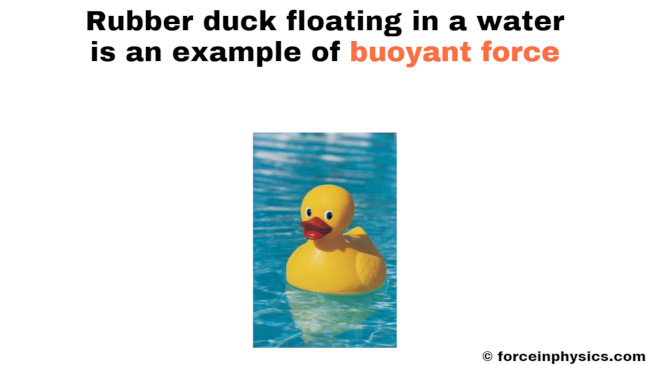
A rubber duck’s playful bobbing on the water’s surface is a result of buoyancy in action. This buoyant force, exerted by the water, counters the duck’s weight and prevents it from sinking. It’s comparable to a gentle tug-of-war between the pull of gravity and the uplifting force of the water. As the buoyant force overcomes the duck’s weight, it remains afloat and adds a playful touch to bath time or aquatic activities.
Toy balloon
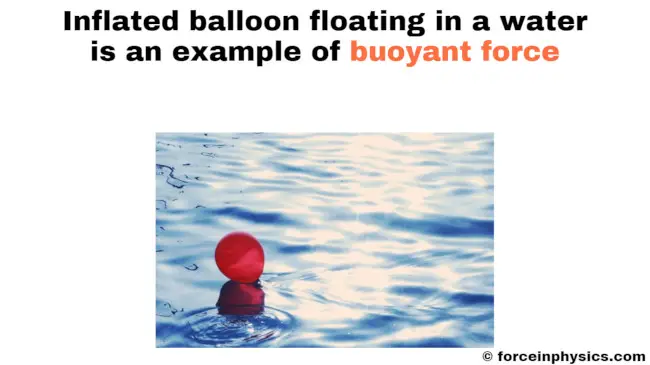
When a toy balloon is placed in water, it remains afloat due to the principle of buoyancy. The balloon is filled with air, which makes it less dense than the water surrounding it. As a result, the buoyant force exerted by the water on the balloon is greater than its weight, causing the balloon to float on the water’s surface. This buoyant force counteracts the force of gravity pulling the balloon downward, allowing it to hover effortlessly.
Leaf
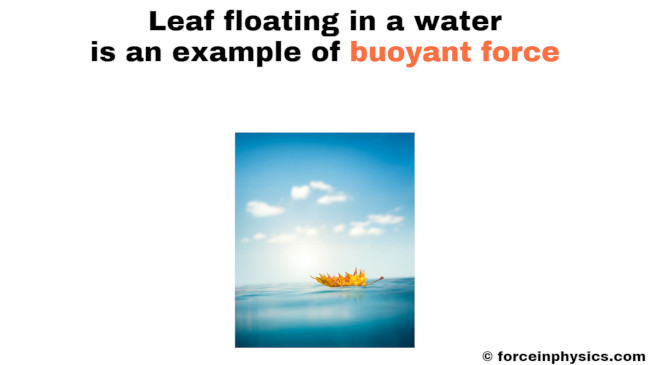
Leaves float on the surface of water due to buoyancy, a result of the water’s upward push that counteracts the weight of the leaves. This buoyant force is a consequence of the leaves displacing an amount of water equal to their own weight. Because leaves are less dense than water, the upward force exerted by the water is greater than the downward force of gravity, allowing the leaves to remain afloat. This delicate balance between the buoyant force and gravity allows the leaves to gracefully rest on the water’s surface.
Plastic bottle
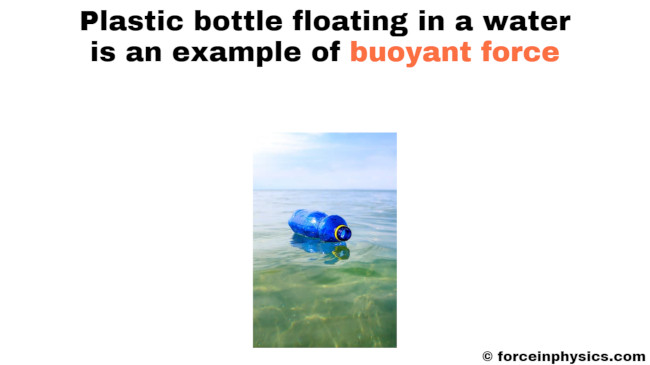
When a plastic bottle is placed in a river, it remains buoyant and afloat due to the principle of buoyancy. The water exerts an upward force on the bottle, known as the buoyant force, which opposes the downward force of gravity. This buoyant force is a result of the displaced water’s weight being greater than the weight of the bottle itself. As the bottle displaces its volume of water, it experiences an upward push that prevents it from sinking. This phenomenon allows the plastic bottle to effortlessly stay on the river’s surface, illustrating the concept of buoyancy in action.
Lifeboat

A lifeboat remains afloat on the water’s surface due to the principle of buoyancy. The boat’s design and shape displace a certain amount of water, and as a result, the water exerts an upward force on the boat that counters its weight. This upward force, known as buoyant force, prevents the lifeboat from sinking and allows it to maintain its position above the waterline. The greater the displaced water’s weight, the stronger the buoyant force becomes, effectively supporting the weight of the lifeboat and the individuals on board. This buoyant effect ensures that the lifeboat remains stable and capable of safely navigating and providing assistance on the water.
Aquatic plant
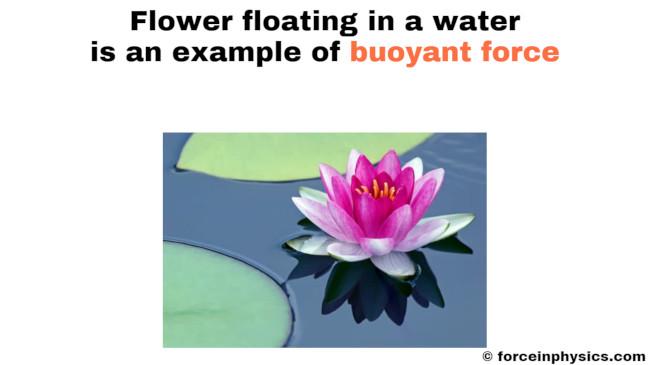
Aquatic plants, such as water lilies and reeds, float in bodies of water because of buoyancy. Their lightweight and buoyant structure allows them to stay suspended on the water’s surface. This buoyant force counteracts the force of gravity and prevents the plants from sinking. The roots of aquatic plants often extend into the water and anchor them, contributing to their stability and growth. This buoyant property is essential for these plants to thrive in their aquatic habitats, where they receive the sunlight and nutrients they need to survive.
Swimming
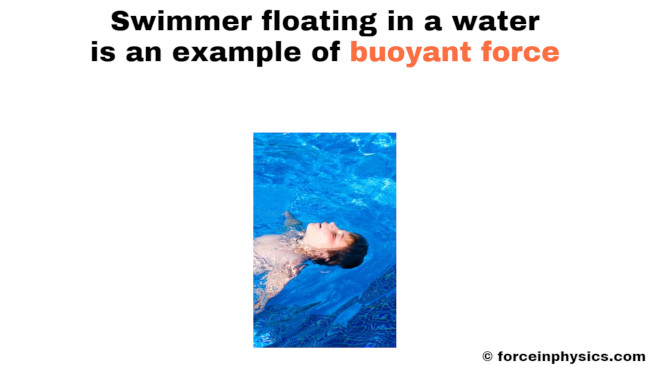
When individuals swim in a pool, they experience buoyancy, a force that allows them to float and remain partially submerged in the water. This buoyant force is the result of the water exerting an upward push on their bodies that counteracts the force of gravity pulling them downward. The greater the volume of water displaced by the body, the stronger the buoyant force. This phenomenon is why people feel lighter and more buoyant when immersed in water, making swimming and floating easier than on dry land. It’s a fundamental principle of buoyancy that contributes to the enjoyment of aquatic activities and the feeling of weightlessness in water.
Seaplane
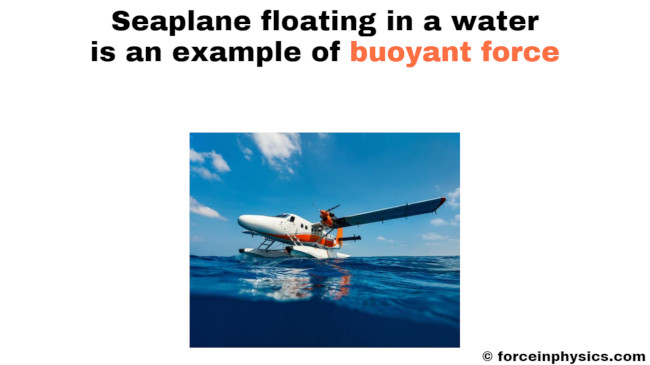
The ability of a seaplane to float on water is a direct result of buoyant force at work. This force acts in opposition to the plane’s weight, effectively preventing it from sinking. When the seaplane lands on water, it displaces a certain volume of water equal to its weight. The water’s upward push on the plane, also known as buoyant force, exceeds the force of gravity pulling it downward. As a result, the seaplane remains afloat and supported by the water’s surface. Buoyancy allows seaplanes to glide seamlessly over water bodies, making them versatile and capable of both flying and floating, enabling them to operate from water as well as land-based runways.
Fruit

Fruits placed in a water bucket exhibit buoyancy, a phenomenon where the upward force exerted by the water is greater than the weight of the fruits themselves. This buoyant force opposes gravity and allows the fruits to remain afloat on the water’s surface. As the fruits displace an amount of water equal to their weight, the water’s upward pressure supports them and prevents them from sinking. This buoyant effect is what allows various types of fruits, such as apples or oranges, to bob and float in the water, showcasing the influence of buoyancy in counteracting the force of gravity.
Swim ring
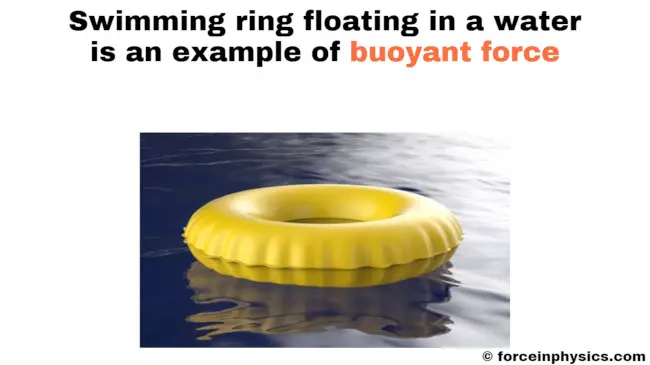
A swim ring rests effortlessly on the water’s surface due to buoyancy, a force that opposes the weight of the swim ring and any load placed upon it. This buoyant force is a result of the displaced water exerting an upward push on the swim ring, effectively supporting its weight. As individuals or objects sit or hold onto a swim ring, they benefit from this buoyant force; it enables them to to experience a reduction in effective weight and allows them to stay afloat in the water. The swim ring’s design takes advantage of buoyancy to offer support, making it an essential accessory for recreational activities and ensuring safety while enjoying aquatic environments.
Basketball
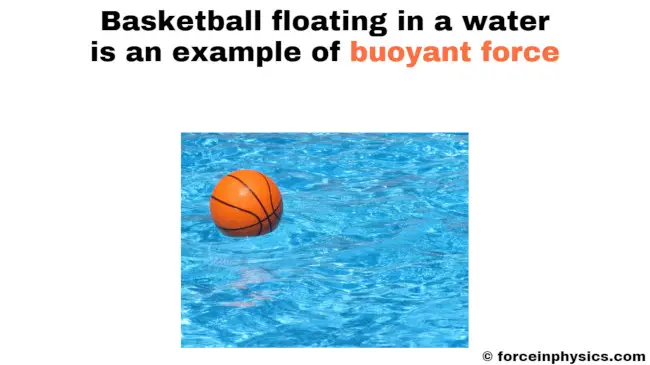
When a basketball is placed in water, it showcases the principle of buoyancy. The basketball’s weight is countered by the buoyant force exerted by the water, which pushes upward against the ball. This buoyant force effectively reduces the net weight of the basketball, allowing it to remain partially submerged and preventing it from sinking to the bottom. The interaction between the basketball and the water illustrates how buoyancy works, as the displaced water creates an upward push that maintains the basketball’s equilibrium in the fluid.
Related
- Balanced force
- Unbalanced force
- Friction
- Tension (physics)
- Applied force
- Normal force
- Drag (physics)
- Gravity
- Centripetal force
- Centrifugal force
- Buoyancy
- Net force
- Compression (physics)
More topics
External links
- Buoyancy – Wikipedia
- What is buoyant force? (article) – Khan Academy
- Buoyancy – CK-12
- Buoyancy | History, Science, & Applications – Britannica
- Equal Volumes Feel Equal Buoyant Forces – HyperPhysics Concepts
- Buoyancy – The Physics Hypertextbook
- Buoyancy Definition & Meaning – Merriam-Webster
- What is Buoyancy? Computational Fluid Dynamics – SimScale
- Buoyancy Definition & Meaning – Dictionary.com
- Archimedes’ Principle and Buoyancy – BCcampus Pressbooks
- BUOYANCY – Cambridge Dictionary
- 14.6: Archimedes’ Principle and Buoyancy – Physics LibreTexts
- Buoyancy | Definition & Equation – Video & Lesson Transcript – Study.com
- Buoyancy – American Meteorological Society
- Buoyancy – Human Kinetics
- Buoyancy – University of Tennessee, Knoxville
- Buoyancy – PhET
- What is the basic reason behind buoyancy? – Physics Stack Exchange
- Buoyancy – Nexus Wiki – American Association of Physics Teachers
- What is Buoyancy? – Mocomi Kids
- Buoyancy: Definition, Law, Formula & Effects – Vaia
- Buoyancy and Buoyant Force – Science Facts
- What is buoyancy? – BBC
- What is Buoyancy? (with pictures) – AllTheScience
- Buoyancy & Archimedes’ Principle – Isaac Physics
- Buoyancy definition in American English – Collins Dictionary
- Buoyancy – Definition, Meaning & Synonyms – Vocabulary.com
- What Is Buoyant Force? Origins, Principles, Formulas – ThoughtCo
Deep
Forceinphysics.com was founded by Deep Rana, who is a mechanical engineer by profession and a blogger by passion. He has a good conceptual knowledge on different educational topics and he provides the same on this website. He loves to learn something new everyday and believes that the best utilization of free time is developing a new skill.
